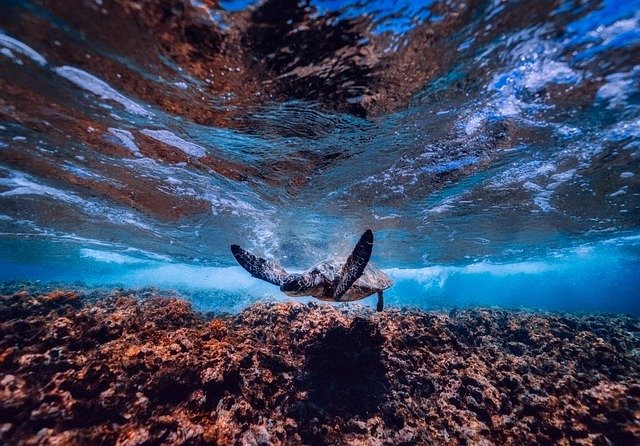
Hawaii: under the surfboards, a Marine Protected Area
Marine Protected Area : Hawaii and its treasures of biodiversity
In previous articles, we have already talked about Marine Protected Areas (MPAs) and their importance in the fight against climate change and nature conservation. Today, we would like to talk to you more specifically about one of these areas, and in particular one of the largest in the world. It is the National Marine Monument at Papahānaumokuākea in Hawaii.
This vast marine space has long been anchored at the top of the podium of the world’s largest MPAs, before being dethroned by the Ross Sea Marine Sanctuary in Antarctica, which is considered to be the last intact marine ecosystem on the planet, covering an area of 1.55 million square kilometers. But Papahānaumokuākea is not so far behind, with an area of 1.51 million square kilometers. It was expanded to four times its original size under Barack Obama’s mandate in August 2016, it was an MPA originally created by President George W. Bush on June 15, 2006.
The name Papahānaumokukuākea is a commemoration to the union of two Hawaiian ancestors: Papahānaumoku and Wākea which gave birth to the archipelago.
This exceptional sanctuary have more than 7000 species such as blue whales, sea turtles, monk seals and many others. It covers the area of the Hawaii-Emperor hot spot, in the center of the North Pacific Ocean. The majority of the species present are in good health so that we can find coral specimens over 4000 years old (e.g. black coral, Antipatharia spp). Other animals that are threatened with extinction, such as the short-tailed albatross, find refuge here, which ensures the survival of the species.
In addition, the environment around this sanctuary is made up of a multitude of different habitats, with coral reefs, lagoons, coastlines, abysses, dunes, dry grasslands, etc. We can also mention the very high degree of endemic species present in this region. In fact, 20% of fish species and 40% of coral species exist only in this protected marine area. Thanks to the very strict degree of protection that is in place, the environment is largely dominated by large predators such as sharks, which elsewhere have practically all disappeared from the island environments due to human activities (fishing, yachting, tourism, etc.).
The protection of this MPA is a challenge because many constraints appear in the management of such a vast area. In addition to its size, this sanctuary is remote because it is located more than 200 km from the first Hawaiian islands. Added to this are the financial constraints of such protection in order to enforce the laws surrounding it.
But it is an achievable challenge as long as the actors concerned and the populations remain determined to conserve this treasure of biodiversity. Thanks to these challenges, these maritime spaces could become more and more numerous (e.g. the recently created Komodo Reserve), larger and larger and more protected. Let’s act for the good of marine biodiversity. Let’s act for the environment.

Sorry, the comment form is closed at this time.